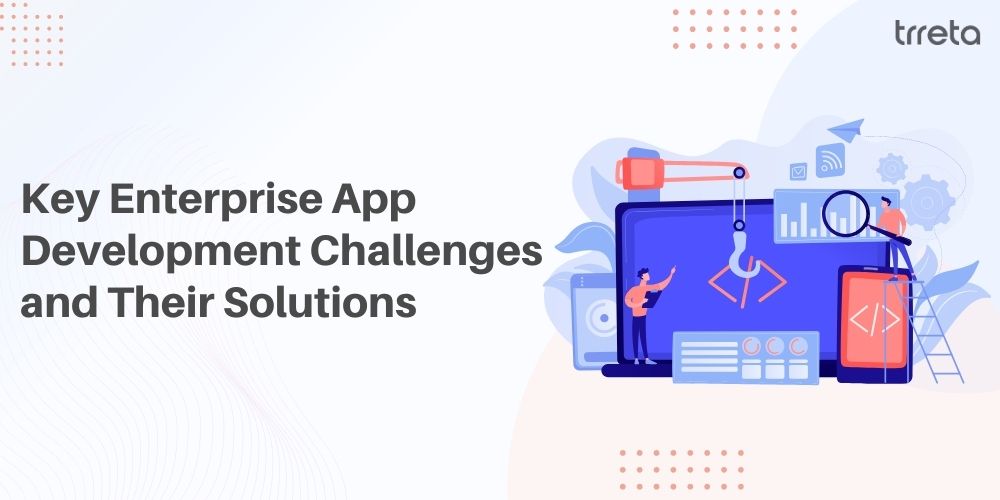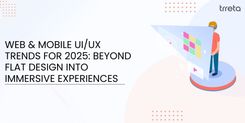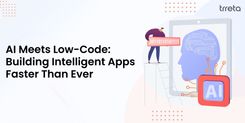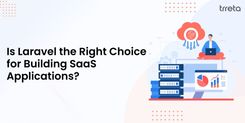Enterprise application development is a powerful enabler of smarter operations, faster decisions, and seamless team collaboration across distributed environments. However, turning that potential into reality is often easier said than done.
From integration roadblocks and scalability hurdles to data security threats and poor user adoption, enterprise software projects face a unique set of challenges that can derail success. Many organizations struggle not because of a lack of resources, but because systems fail to scale, integrations fall apart, or solutions simply don’t align with evolving business needs.
Unlike standard app development, building enterprise-grade applications involves far more complexity — connecting legacy infrastructure, navigating compliance requirements, and delivering consistent experiences to users spread across multiple departments.
That’s why businesses need more than just good code — they need proven strategies to overcome these challenges head-on.
In this blog, we dive into the most pressing enterprise app development challenges and reveal practical, real-world solutions. From choosing the right tech stack to ensuring system-wide scalability and integration, this guide helps you make smarter decisions and build enterprise applications that truly drive value.
What Is Enterprise App Development?
Enterprise app development refers to designing, building, and maintaining applications tailored to the unique needs of large organizations. These enterprise applications development initiatives must support high volumes of users and data, integrate multiple business systems, comply with regulatory standards, and scale across departments or geographies. At its core, enterprise app development delivers robust, secure, and efficient software solutions that underpin organizational operations.
Delivering Enterprise App Solutions: Current Landscape & App Development Trends
Enterprise application development is evolving rapidly thanks to shifting software development trends. Key trends include
- Cloud engineering solution adoption, enabling scalable and resilient back‑end infrastructure.
- Increases in microservices, serverless computing, and DevOps automation.
- Agile software development methodologies—that embrace iterative feedback loops and flexibility.
- Rise of low‑code/no‑code platforms for certain business areas.
- Stronger focus on DevSecOps and built‑in security.
Organizations now combine cloud engineering solutions like Kubernetes, serverless functions, and containerized microservices to support agile, scalable enterprise app solutions.
Why Building Enterprise-Level Application Development Is Particularly Challenging
Enterprise application challenges are distinct from those of consumer or small‑business apps due to scale, complexity, legacy dependencies, compliance needs, and wide user bases.
What Are the Challenges of Enterprise Application Development?
Let’s dive into the core challenges that can make or break your enterprise application development journey.
1. Shifting Business Requirements
Organizations frequently pivot strategies, launch new services, or respond to compliance changes. Requirements can change mid‑project, causing delays, scope creep, and frustration among stakeholders and development teams.
2. Integration with Legacy Systems & Third‑Party Services
Most enterprises use established ERP, CRM, BI, or specialized platforms. Forcing these into integrations without middleware or API strategies often results in brittle connectors and data silos.
3. Scalability & Performance
Enterprise apps must support high concurrent usage, large datasets, and geographically distributed users. Poor data architecture or mis‑sized infrastructure can degrade response times or crash systems under load.
4. Security, Compliance & Data Governance
Handling sensitive business or customer data requires strong encryption, threat monitoring, and auditing. Governance frameworks and regulatory standards like GDPR, HIPAA, or internal policies add complexity.
5. Legacy Modernization & Technical Debt
Outdated monolithic systems often underpin enterprise operations. Transitioning to cloud-native or microservices architectures without breaking continuity is notoriously difficult.
6. Data Management & Quality
Enterprises integrate data from multiple sources in varying formats. Maintaining data accuracy, provenance, consistency, and real‑time access is a major hurdle.
7. Team Skill Gaps & Organizational Alignment
Developing enterprise applications requires cross‑disciplinary teams—architects, DevOps, infosec experts, product owners, UX designers. Ensuring collaboration and communication across silos is a challenge.
8. User Adoption & UX Challenges
Even powerful enterprise app solutions can fail if users don’t embrace them. Common issues include poor UX, lack of training, or resistance to change. Without high adoption, ROI suffers.
Solutions: How to Develop Enterprise Application Successfully
1. Adopt Agile Software Development Methodologies
Using frameworks like Scrum and Kanban allows teams to handle shifting objectives by working in sprints, delivering MVPs early, and iterating with stakeholder feedback. Agile reduces risk from shifting business requirements.
2. Embrace DevOps / DevSecOps Practices
Automated CI/CD pipelines, code reviews, and infrastructure‑as‑code streamline deployment and maintain security. Integrating security testing early (“shift‑left”) prevents late-stage vulnerabilities.
3. Modern Architectures: Microservices & API‑Driven Platforms
Microservices offer modularity, fault isolation, and scalability. Combining API gateways or service meshes simplifies integration and governance across services.
4. Plan an Intelligent Data Layer
Centralized data pipelines or abstraction layers ingest, normalize, and manage enterprise data. This enables real‑time analytics, accurate reporting, and smoother scaling.
5. Controlled Legacy Modernization
Instead of ripping and replacing, incrementally refactor legacy modules. Use transitional wrappers or APIs and gradually migrate functionality to modern stack to avoid disruption.
6. Cloud Engineering Solutions & Scalable Infrastructure
Adopt cloud engineering solutions—containers, serverless, or managed services—to dynamically scale. Continual cost monitoring and forecasting help avoid cloud cost overruns.
7. Build Cross‑Functional, Product‑Driven Teams
Assemble T‑shaped professionals who understand business value as well as technical stack. Use design thinking, user research, and promote shared ownership through architecture decision records (ADRs) and documentation.
8. User‑Centric Design & Adoption Strategy
Invest in UX workshops, train users early, collect feedback during pilot phases. Design workflows to feel intuitive and reduce friction—improving adoption rates and ROI.
Emerging Enterprise App Development Trends to Watch
- Cloud‑native architectures like microservices, container orchestration, serverless, and service mesh.
- Low‑code / no‑code platforms, accelerating development especially for departmental tools.
- Generative AI‑driven integration, using AI to auto‑generate APIs or intelligently map fields across systems.
- ML‑powered security: AI algorithms monitoring containers and microservices to detect anomalies and secure runtime environments.
- Continuous learning and up‑skilling internal teams to keep pace with software development trends and evolving tech stacks.
With the Final Thought
In today’s fast‑moving digital environment, enterprise application solutions must be more than just technical assets—they must be strategic enablers. Developing enterprise application with resilience, scalability, and security requires anticipating challenges and designing solutions that align with business goals.
From cloud engineering solution frameworks and agile software methodologies to modular microservices, data abstraction, and user‑centered design—each layer contributes to a robust enterprise app development lifecycle. By partnering with an organization like Trreta Techlabs, leveraging proven solutions, and empowering teams across disciplines, businesses can confidently build or modernize enterprise‑level applications that drive growth, streamline operations, and accelerate future innovation.
Whether you're integrating legacy systems or launching next‑gen tools, navigating challenges is part of the journey—and the payoff is transformative.
How Trreta Techlabs Can Help
At Trreta Techlabs, we specialize in enterprise app solutions and engineering high‑impact enterprise level application development. Whether you're embarking on a greenfield project or modernizing legacy systems, we combine agile development, secure DevOps pipelines, cloud engineering solutions, and UX‑driven design to deliver robust, scalable, and user‑friendly enterprise applications. For expert assistance, Contact us to learn how we can support you in developing enterprise application solutions aligned to your vision.
FAQs
1. What is enterprise app development?
Enterprise app development involves building scalable, secure, and integrated software tailored to meet the operational needs of large organizations across departments and geographies.
2. What are the challenges of enterprise application development?
Common challenges include shifting business requirements, integrating legacy systems, scalability and performance issues, security compliance, data management, and user adoption hurdles.
3. How does agile software development help enterprise apps?
Agile software development methodologies such as Scrum enable iterative delivery, faster feedback, adaptability to changing requirements, and efficient release of MVPs.
4. Why is cloud engineering solution important in enterprise development?
Cloud engineering provides elastic infrastructure, containerization, serverless deployment, and real‑time scaling—key to keeping enterprise applications performant and cost‑effective.
5. How do you ensure data quality in enterprise apps?
Use centralized data pipelines, automation tools, data governance frameworks, and ontology‑based integration to standardize formats, improve consistency, and enable real‑time analytics.
6. What role does DevSecOps play in enterprise app solutions?
DevSecOps integrates security practices into every stage of the SDLC—static code analysis, vulnerability scanning, automated testing—ensuring enterprise applications are secure from design to deployment.




